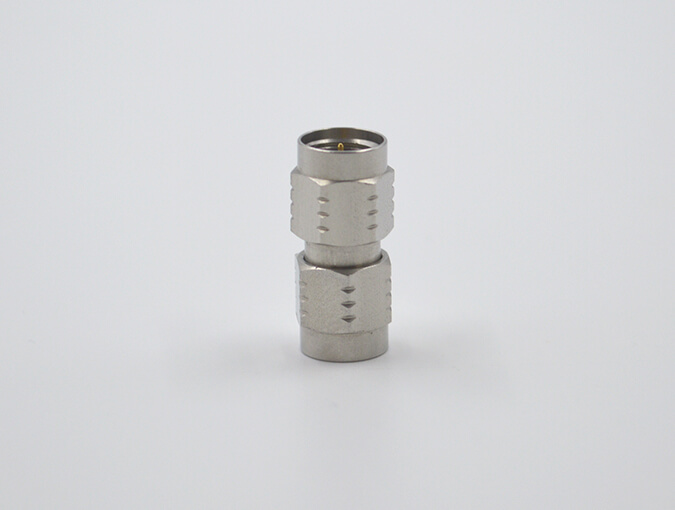SMA RF Coaxial Connectors Are Powerful And Versatile
11/10/2019With the popularity of wireless applications, the demand for radiofrequency coaxial connectors has increased exponentially. We examined these connectors carefully and the challenges they face in providing powerful data transmission.
Various electromechanical solutions have been developed to facilitate board-to-board connections and power and data transmission. Multifunctional SMA RF coaxial connector is one of the preferred technologies for testing and measurement, communication, broadcasting, and wireless technology.
For antenna applications, miniature A (SMA) solutions that provide bridging between RF and microwave can be used for standard and reverse polarity. They are usually designed for the frequency range of DC to 18 GHz, with a characteristic impedance of 50_and a threaded coupling mechanism. They can achieve a safe connection even in high vibration environments.

SMA product categories include stand-alone connectors and pre-assembled cable assemblies with adapters that allow a variety of standard solutions to meet a wide range of application requirements. Connector options include right-angled or straight-line and panel mounting options, rear-mounted partitions and flange mounting options, and a variety of terminal types based on the selected style.
The transmission efficiency can be solved by strengthening the mechanical characteristics of the connector. Many coaxial connectors on the market use the right angle configuration as the main reference point to maintain impedance at 50_. Due to internal mechanical constraints, single pin and welded two-piece pin designs are the most widely used. Impedance mismatch may be due to the failure of internal mechanical structure, imprecise size and improper volume of solder paste at two-piece design solder joints. A single pin right angle connector is designed to minimize the signal loss caused by bending.

Design of Single Pin (Left) and Welded Two-piece Pin (Right) Coaxial Connector
Another consideration in the design of right-angle RF coaxial connectors is the volume of air around the contacts because impedance mismatches usually occur at the end of the central contacts. In a two-piece design, the volume of air and must be accurately calculated to minimize impedance mismatches.

The air volume around the contact in the right angle coaxial connector has a direct effect on the impedance mismatch.
The following time-domain reflection chart shows the impedance deviation on the two soldered pins. This is usually due to solder paste at joints and/or incorrect air compensation due to poor internal design.

This time-domain reflection comparison illustrates the discontinuity of the design of the single pin and the central pin of the solder pin.
There are also several ways to optimize transmission lines with end-emitting connectors, including designs adapted to various thicknesses. These options provide different levels of mechanical stability and affect the transmission lines designed above. The contact area between the welding end of the central contact and the PCB transmission line is the key to achieve impedance matching and good transmission results. When the impedance deviation in the contact area is small, it is easier to achieve higher frequency.

Large clearance around the cylindrical pin can help compensate for impedance deviation, thus achieving higher frequency performance.
In order to achieve impedance matching, ideally, the transmission line should be designed to have a lower impedance to compensate for the increased impedance in the contact area between the welding end and the transmission line. For the above frequencies, smaller and thinner flat pins can be used on transmission lines to reduce the impact of impedance mismatch. In these types of high-frequency applications, due to their mechanical structure, cylinders usually need more effort to achieve acceptable impedance. However, from a mechanical point of view, cylinders are stronger than flat pins and maybe more easily damaged during assembly and production.
Standards and protocols including 3G, 4G LTE, 5G, Wi-Fi, Bluetooth, and other IoT communication systems are widely used in consumer, medical, industrial, data communications and telecommunications markets. SMA connectors are usually optimized for frequencies below 6GHz, which helps illustrate their wide appeal. However, the connectors provided by Teruilai can work from DC to 18GHz, providing greater design flexibility for product designers in these and other markets.

Impedance Matching Options for SMA RF Coaxial Connectors.
In addition to different pin and transmission line designs, customers can achieve impedance matching by compensating the length of through-hole components after assembly on PCB (upper left), thereby controlling the signal loss (higher than the center) of the gap between PCB and SMT components, and limiting the size and height of the end-emitting connector in transmission line design (upper right).
Applications requiring higher frequency coaxial connectors encounter more impedance matching difficulties in design and test phases. Since signal paths between connectors and PCBs play an important role in reducing impedance mismatches, it is important to select suitable SMA connectors and termination methods in the early stage. Through-hole reflow welding installation technology (THR) and other technologies provide designers with more choices.
Prefabricated coaxial cable assemblies can also be used to connect plugs to SMA plugs and SMA plugs to SMA baffle sockets, as well as several different types of cables, from flexible cables to manually formed cables. Flexible coaxial cable options include RG-58C/U, RG-174/U, RG-142/U, RG-316/U and RG-316 double braided. Hand-shaped options include 0.141 "and 0.085" cables.

Characteristics of multiple coaxial cable options.
Teruilai connector manufacturers regularly release new RF coaxial connectors of different sizes and coupling mechanisms to meet the changing needs of device designers in many markets that rely on these powerful multi-functional connectors.









